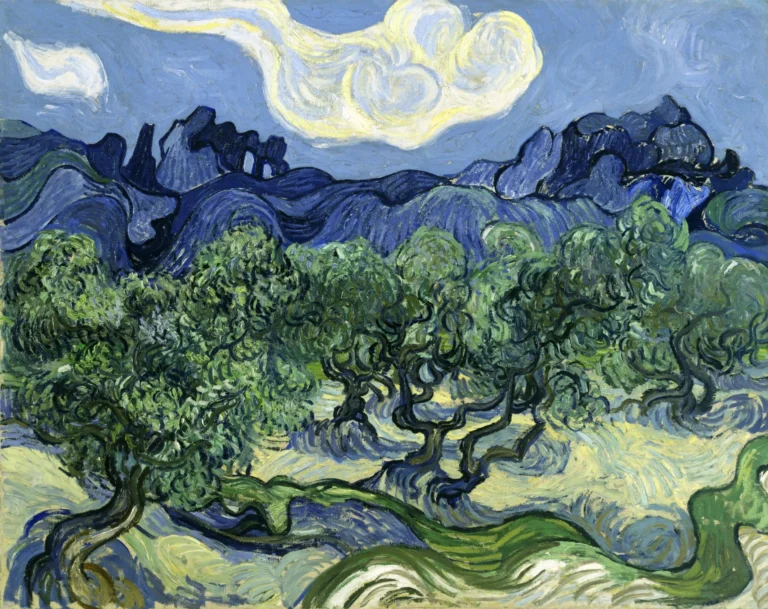Olive Trees with the Alpilles in the Background
Olive Trees with the Alpilles in the Background is a vibrant landscape showcasing Van Gogh’s fascination with the natural world and his love for the rugged beauty of southern France. The swirling olive trees, textured mountains, and bold color palette capture the vitality of the scene, inviting viewers into a world alive with movement and energy. Painted during his time at the asylum in Saint-Rémy, this piece reflects his emotional connection to nature, where he found solace and inspiration amidst his struggles.
1889
About the Artwork
In 1889, Van Gogh voluntarily entered the Saint-Paul-de-Mausole asylum near Saint-Rémy-de-Provence. There, he was captivated by the local landscape and took to painting the olive groves that dotted the countryside. Van Gogh felt a deep spiritual connection to these trees, seeing them as symbols of resilience, strength, and beauty. With bold strokes and a vibrant color scheme, he aimed to convey the olive trees’ essence and their significance in his life during this tumultuous period.
Did You Know
Did you know that olive trees symbolized resilience for Van Gogh? He saw their strength and ability to thrive in rocky terrain as symbolic of his own struggles. How inspiring is that connection!
Though often considered one of the great masters, Van Gogh received very little formal training in art. He taught himself by studying the works of other artists and practicing obsessively.
Van Gogh may have had synesthesia, a condition that allows people to “see” sounds or “hear” colors. This might explain his vibrant color choices and unusual perspectives, especially in works like The Starry Night, where he blended swirling skies with intense yellows and blues to depict movement and emotion in ways unseen before.










